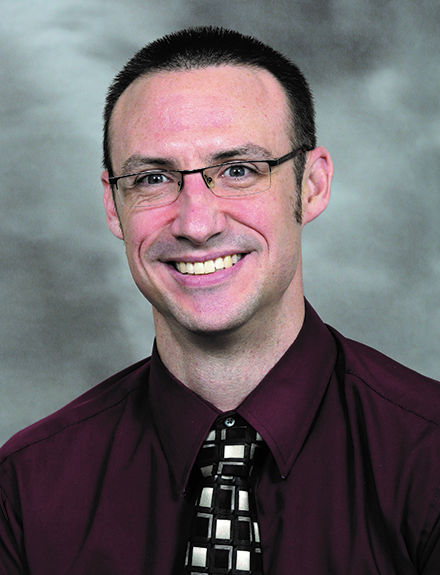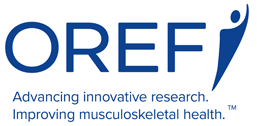

Roman Natoli, MD, PhD
Resident Clinician Scientist Training Grant
Research Topic
Investigating whether alcohol consumption alters the production of proteins related to mesenchymal stem cell migration necessary for fracture healing
Patient Impact
Therapeutics that prevent the reduction or increase the production of osteopontin in a fracture callus, even in the presence of alcohol, which will allow for the normal migration of mesenchymal stem cells and therefore enhance fracture healing
How Binge Drinking Affects Fracture Healing
OREF grant recipient seeks biologic therapy to reduce nonunions
Sharon Johnson, OREF contributing writer
During his time as a resident at Loyola University’s Stritch School of Medicine in Maywood, Illinois, Roman Natoli, MD, PhD, learned that excessive alcohol consumption correlates with nonunions, although the pathophysiology underlying this association was not well understood.
“Orthopaedic surgeons have done well in understanding the mechanics behind fracture healing, but the biology is something that has been more difficult for us to grasp,” he said. “Fractures that don’t heal can be very troublesome. For patients who sustain tibia fractures and go into nonunion, quality of life can be even worse than for patients who have heart attacks or who live with diabetes. It’s a really difficult problem.
What is known
Most fractures heal but 5% to 10% go onto nonunion and do not heal, even with the best of care.
Patients with nonunions are left in dire straits, explained Dr. Natoli, now an assistant professor of orthopaedic surgery at the Indiana University School of Medicine in Indianapolis.
Alcohol abuse increases nonunion rates through a number of mechanisms. These include low albumin as a proxy for liver failure and inability to make key proteins, low calcium intact, interference with normal inflammatory responses to fractures and poor nutrition.
Nonunions are costly
With 12 million to 15 million fractures of upper and lower extremities treated annually in the United States, as many as 1.5 million patients struggle with recovery from nonunions each year.
Patients with nonunions experience prolonged recovery periods during which their activities are limited, sometimes severely, and their pain can be difficult to manage. The effects on patients’ professional and personal lives can be profound.
In addition, patients with nonunions often need more surgical treatment, which subjects them to further risk and emotional stress, as well as a financial burden, and puts undue pressure on provider resources and care teams.
Does alcohol consumption contribute to non-unions?
During his residency, Dr. Natoli designed a study to shed light on how alcohol interferes with bone repair and how its effects might be mitigated. He received a 2012 Resident Clinician Scientist Training Grant from the OREF to do this work. Now, with a better understanding of bone healing, Dr. Natoli believes that the study will eventually uncover biologic treatments for nonunions. The hope is a biologic injection may minimize the time during recovery that hinders a patient’s activity or weight-bearing. Dr. Natoli’s study is one step in that process.
Hypothesis and study design
One strategy to reduce fracture healing complications is to exogenously deliver mesenchymal stem cells. However, Dr. Natoli hypothesized that binge drinking contributes to nonunions by exaggerating and deregulating the inflammation component of fracture healing. He explained that although inflammation is normal and necessary for fracture healing, altered inflammation that occurs after exposure to alcohol can be detrimental to bone. Oxidative stress due to alcohol consumption inhibits the recruitment of exogenously delivered mesenchymal stem cells to a fracture site. He further posited that pharmacological therapy could effectively normalize the inflammation component, restoring the body’s natural bone healing capacity.
Through in vivo experiments in a rodent model and molecular biology assays, Dr. Natoli examined long-bone fractures sustained by subjects with blood alcohol levels of 0.2, equivalent to those in human patients following binge drinking.
Dr. Natoli measured two different proteins related to mesenchymal stem cell migration in the fracture callus—osteopontin and SDF-1—to determine whether they were impacted by alcohol consumption. He also tested other proteins in the FoxO family. Dr. Natoli then took blood and bone samples and ran a series of molecular biology assays at three, six, seven, and nine days.
The results
Alcohol consumption had no effect on SDF-1, but osteopontin levels in the fracture callus did not show the expected increase after injury, indicating that alcohol blunts or decreases the amount of osteopontin in the fracture callus.
Dr. Natoli also used 3D microcomputed tomography to look at the composition of the callus architecture from a structural perspective. He hopes this data will inform future research to better elucidate bone biology and the healing process. Work resulting from the study funded by OREF was published in the December 2016 issue of the Journal of Orthopaedic Research and in the April 2018 issue of the Journal of Orthopaedic Surgery and Research.
Dr. Natoli remains involved in researching fracture nonunion, from rodent models through human studies focusing on translational aspects of nonunion diagnosis and treatment.
Optimistic outlook
With further research, Dr. Natoli sees a promising future for treating nonunions associated with excessive alcohol consumption or other patient and injury factors.
Beyond the opportunity to conduct a clinically relevant research project, Dr. Natoli said, the OREF grant helped him apply for and gain acceptance into the AAOS/OREF/Orthopaedic Research Society Clinician Scholar Career Development Program. “The program was very valuable and insightful,” he said. “It gave me an opportunity to network with others and discuss their successes and failures in managing careers as both orthopaedic clinicians and researchers. It helped me understand what I and my institution needed for me to have a similar clinician-scientist career."
Sharon Johnson is a contributing writer for OREF. She can be reached at communications@oref.org.
References
1. http://www.boneandjointburden.org/2014-report/via23/fracture-trends
2. Roper PM, Abbasnia P, Vuchkovska A, et al: Alcohol-related deficient fracture healing is associated with activation of FoxO transcription factors in mice. J Orthop Res. 2016;34:2106-15.
3. Natoli RM, Yu H, Meislin MC, et al: Alcohol exposure decreases osteopontin expression during fracture healing and osteopontin-mediated mesenchymal stem cell migration in vitro. J Orthop Surg Res. 2018;13:101.
